10 Ways to Promote Kids' Healthy Eating Habits
Intro
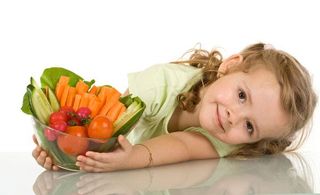
If bad eating habits reign, they can be hard to change especially when they've become comfortable routines. But by keeping unhealthy foods out of your home, and bringing healthy foods in, it's possible to promote better eating habits, even with the pickiest kids.
Whether you're trying to cajole your toddler to give peas a chance, or attempting to persuade your tween into drinking something other than soda, these healthy eating tips might be worth a try.
Don't Ban Junk Food Outright
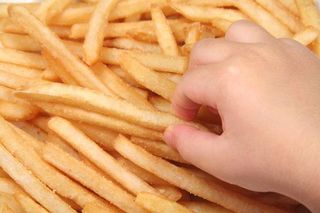
Once kids get their first taste of crunchy, sweet or salty foods, it's hard to get them unhooked, according to pediatric psychologist Eileen Kennedy, of the Cleveland Clinic in Ohio.
Still, she recommended that parents limit the number of treats that kids are allowed to eat each day, rather than ban these foods completely. That way, kids won't be as tempted to want what they can't have.
Banning a specific food is also a bad idea because if the food becomes available to your child outside your home, he or she might eat it despite feeling full, Kennedy said. This can lead to a habit of overeating.
Parents should also avoid restricting desserts or other treats as punishment for bad behavior, because this can lead to an unhealthy relationship with food, she said.
Encourage Them to Eat Smart at School
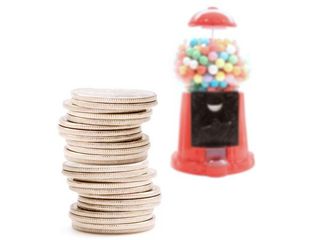
Look over your child's school lunch options many schools provide a printout of each month's lunch menu, Kennedy said. Go over each day's meal choices with your child, and challenge him or her to identify the healthiest option.
That way, your child will be aware of all the selections they have to choose from, and will gain experience in making nutritious food decisions.
As for snacks, rather than giving your kids money for the vending machines at school , make it clear to them that they can instead save their soda or candy money and spend it on nonfood items. To encourage them to not blow their pocket change on sugary or salty treats, give them plenty of healthy snacks, such as apples, to bring to school, Kennedy recommended.
Avoid Buying Unhealthy Foods in Bulk

If you want to buy a treat, buy the smallest possible package of that food, instead of the economy bulk-sized packages, Kennedy said.
For example, buying a bulk pack of small, single-serving bags of cheesy popcorn is better than buying one massive, bulk-size bag of the popcorn.
And store any bulk-size snack foods out of kids' sight and reach , Kennedy said, so that they will be less tempted to mindlessly graze on it throughout the day.
Warn Kids About Drinking Calories

While tweens and teenagers may be aware of which unhealthy foods are packed with calories, they may be oblivious to how many empty calories they consume daily from sugary drinks, Kennedy said.
For example, a McDonald's 22-ounce Chocolate McCafe Shake packs a whopping 880 calories nearly half of the daily calorie intake recommended for most 9- to 13-year-olds by the U.S. Department of Agriculture (USDA). Make tweens and teens aware of how many empty calories are in their favorite unhealthy drinks , and advise them to choose a diet or zero-calorie version of a beverage if they can, she recommended.
To help kids develop a healthy liquid calorie habit from an early age, give your toddler plenty of water and plain milk to avoid getting them used to sugary juice or chocolate milk. If you do give them juice, give them 100 percent fruit juice and water it down, mixing equal parts water and juice.
Related: Do kids really need to drink milk?
Promote Fruits and Veggies at Dinner
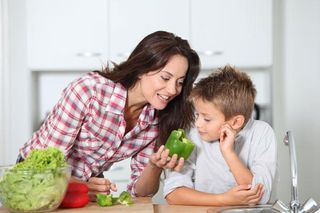
When cooking dinner, always make sure to have one healthy item that your child likes and will eat, Kennedy said.
Cook a limited amount of the meal's starch dish, such as potatoes, butextras of the fruits and vegetables, to encourage seconds. [6 Easy Ways to Eat More Fruits and Vegetables ]
To further entice your picky eater to try a healthy, vegetable-rich dish, let them watch you prepare it and allow them to add in some ingredients themselves under your supervision, the USDA recommends. Name the food your child helped create, and make a big deal of serving "Tania's Thai Salad" or "Henry's Corn and Avocado Tacos" for dinner.
Set a Good Example
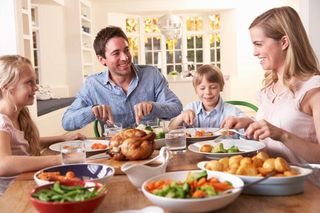
It may seem that your kids especially teenagers often do the exact opposite of your healthy-eating advice, but in fact, your opinion and actions make a big impact on how they view nutrition, the USDA advises.
Preschoolers especially love to copy what their parents do, and are likely to mimic your meal preferences and willingness to try new foods. Take advantage of this monkey-see, monkey-do behavior and make healthy eating choices in front of them.
Eat snacks and meals with your child whenever possible, so they see how much you enjoy eating fruits and vegetables, and make mealtime fun by trying new foods together, the USDA says.
If you have older kids, discourage them from making a "yuck" face when eating vegetables or talking negatively about a certain dish around a younger child at the dinner table.
Start with Small Portions
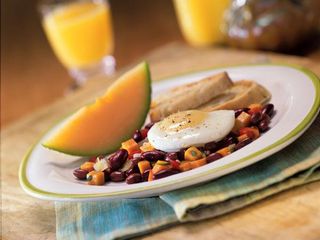
Use smaller plates , bowls and utensils for your child to eat with, and allow them to serve themselves when they are old enough to safely do so, the USDA says. You can begin this practice when they are 3 to 5 years old, and start with allowing them to take a serving of salad or some other non-hot food from small bowl that you hold for them.
This will make them feel "like a grown-up," while helping them learn to measure out how much they want to eat and understand portion size. Encourage them to take one serving at a time and go back for seconds only if they are still hungry.
Help Them Recognize When They've Eaten Enough
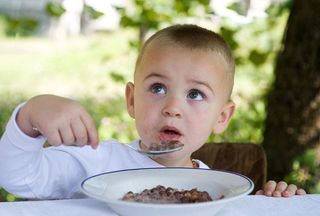
Remind your children to stop eating once they begin to feel full, the USDA says. Do not urge them to finish all the food on their plate, and do not praise them for completely clearing their plate.
Instead, tell them that it's best to only eat as much as they want at that time, and that the leftovers can be finished later when they become hungry again.
Allow your child to stop eating when they feel that they are full, even if you sometimes feel that they have not eaten enough. Making them eat when they are no longer hunger can lead to unhealthy overeating habits.
To help your young child learn to listen to their body's fullness cues at mealtime, the USDA recommends ask them questions such as "Is your tummy telling you that you're full?" or "Is your stomach still making that hungry growling noise?"
Stick to a Strict Meal and Snack Schedule
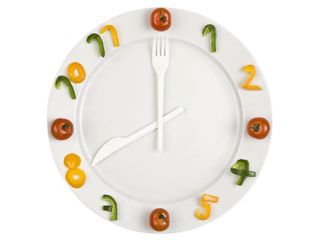
Keeping to a regular meal and snack time schedule discourages kids from grazing throughout the day, or becoming too hungry in between meals, which can cause them to compensate by overeating later, the USDA says.
Most children require three meals and one or two snacks each day , but consult with your child's pediatrician, doctor or nutritionist if you're worried that they're overeating or not eating enough.
And although it's important to stick to an eating schedule, do not pressure your child into eating if they sometimes say that they are not hungry at mealtime.
If your child skips a meal, do not let them "make up for it" with candy or cookies, the USDA says. Instead, offer a healthy snack, such as apples or baby carrots, and make sure that they eat enough at their next full meal.
Nutritious New Foods: Try, Try Again
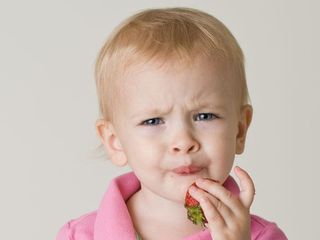
Don't be discouraged if your toddler stubbornly turns away from mashed broccoli or strained peas, the USDA says. It takes time for children to learn to like a new food's taste and texture. Offer a new food many times, as it can take up to a dozen tries for a child to decide they like a certain food.
To help a picky eater or rebellious teen feel more in control of their food choices and therefore be more likely to eat the healthy meals you dish out pose food questions as an option. For example, ask "Which would you prefer at dinner: cucumbers or tomatoes?" instead of "Do you want tomatoes as a dinner side dish?"
Sign up for the Live Science daily newsletter now
Get the world’s most fascinating discoveries delivered straight to your inbox.
